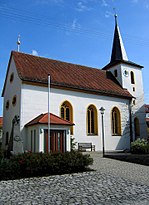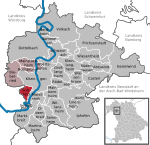Breitbach (Main)
Bavaria river stubsRivers of BavariaRivers of GermanyTributaries of the Main

Breitbach is a river of Bavaria, Germany. It is a left tributary of the Main in Marktbreit.
Excerpt from the Wikipedia article Breitbach (Main) (License: CC BY-SA 3.0, Authors, Images).Breitbach (Main)
Hafenstraße, Marktbreit (VGem)
Geographical coordinates (GPS) Address Nearby Places Show on map
Geographical coordinates (GPS)
| Latitude | Longitude |
|---|---|
| N 49.6689 ° | E 10.1419 ° |
Address
Hafenstraße
97340 Marktbreit (VGem)
Bavaria, Germany
Open on Google Maps










